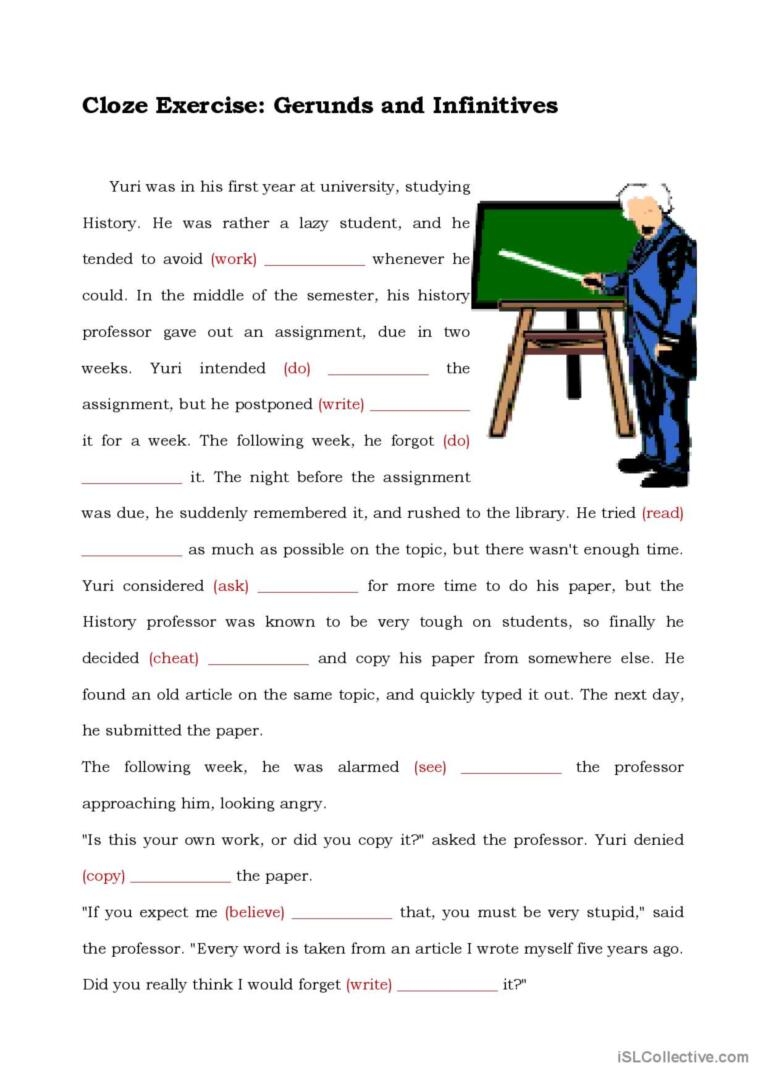When learning English, one of the most common grammar topics that students struggle with is understanding the difference between infinitives and gerunds. These two forms of verbs can be confusing, but once you grasp their usage, you’ll be able to communicate more effectively in English.
Infinitives are the base form of a verb, usually preceded by the word “to.” For example, “to run,” “to eat,” and “to study” are all infinitives. Gerunds, on the other hand, are verbs that end in “-ing” and function as nouns in a sentence. For example, “running,” “eating,” and “studying” are gerunds.
Infinitive vs Gerund ESL
One key difference between infinitives and gerunds is their function in a sentence. Infinitives are often used after certain verbs such as “want,” “need,” and “like.” For example, “I want to go to the movies,” “I need to finish my homework,” and “I like to drink coffee.” Gerunds, on the other hand, are used as the subject or object of a sentence. For example, “Running is good exercise,” “I enjoy eating ice cream,” and “Studying English can be challenging.”
Another important distinction between infinitives and gerunds is their use after prepositions. In English, gerunds are typically used after prepositions, while infinitives are not. For example, “I am interested in learning new languages” and “She is good at playing the piano.” In these sentences, “learning” and “playing” are gerunds that follow the prepositions “in” and “at.”
It’s also worth noting that certain verbs can be followed by either an infinitive or a gerund, but the meaning of the sentence may change. For example, “I stopped to eat lunch” means that you paused what you were doing in order to have lunch, while “I stopped eating lunch” means that you no longer eat lunch for some reason. Understanding these nuances can help you use infinitives and gerunds correctly in your English conversations.
In conclusion, mastering the use of infinitives and gerunds in English is essential for improving your language skills. By understanding the differences between these two forms of verbs and practicing their usage in context, you’ll be able to express yourself more clearly and effectively in both spoken and written English.
